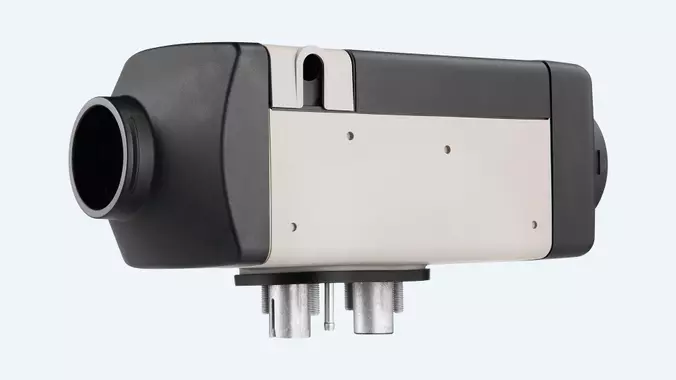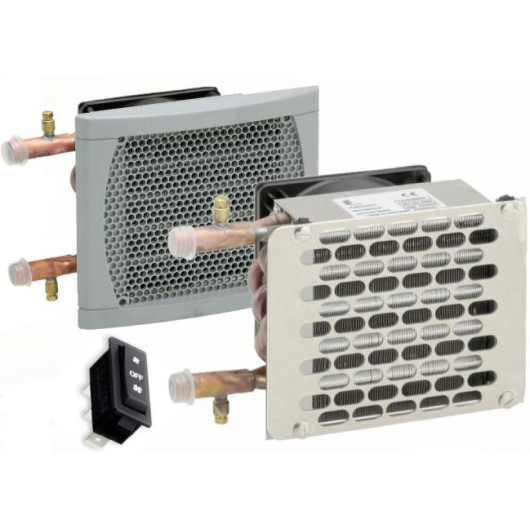SURVEY - HEATING YOUR CATAMARAN

You could well find this article useful even if you sail in sunny areas!
Before you give us your opinion about on-board heating, let us tell you a little more about it.
On-board heating has a number of virtues: it increases comfort levels, of course, but it also extends sailing areas, can extend the boating season and, above all: a heated boat ages better than others... Benefits worth thinking about...
For some years now, heating system suppliers have been focusing on miniaturizing their equipment and optimizing its performance.
On a boat, it's not just the cold that's the enemy. Ambient humidity and drafts are the factors that have the greatest impact on the feeling of temperature.
At Excess, we don't currently offer heating systems, but recent and numerous contributions on the subject have prompted us to put question to Lab members...
There are two main types of heating system for sailboats:
Forced-air heating, which works like a hairdryer. Heat is transported by the air, which is heated by a boiler that runs on diesel. The air circulates through large-diameter ducting that has to fit into the boat's interior and structure.
Efficient at short range, this solution is comfortable for rapidly reaching a base temperature.
However, air is a poor conductor of energy. This air system is therefore preferable for short distances, as is the case on our cruising catamarans.

Water-based heating is more well-known, as it is comparable to a domestic system you might have at home.
The boiler heats the water, which circulates round the heaters (radiators). Today, such heaters are fitted with fans to increase heat distribution.
In a water-based system, the pipework takes up very little space on board, making installation easier, but the unit heaters consume cabin space and add weight.
A water-based system is highly efficient over long distances, with the water being able to travel tens of meters with no loss of efficiency. It does have one drawback: the risk of water leakage.
While an air heater will only let air escape without any significant impact, a water leak could cause damage on board.

We'd like to know your preference between these two options. To this end, we've created a questionnaire that we’re inviting you to complete: it won't take you more than 2 minutes.
Thank you in advance for your contribution. It means a lot to us. Together, let's continue to imagine the catamarans of tomorrow!



Heat pumps are not yet widely used on boats, but there's no doubt that this technology from the construction industry, and more recently from the automotive sector, could make a big contribution to the boating world.
The energy efficiency of this solution is very good, but our sailboats would probably first have to go through an ‘insulation’ phase in order to size this costly technical solution as accurately as possible.
Finally, marinization of the heat pump units would be an important prerequisite, so that they can withstand the boat’s movements and environment without damage.
In any case, this is a very promising avenue for the future, and I thank you for your suggestion.
--
Bonjour Harryo,
Les pompes à chaleur sont encore très peu présentes sur les bateaux, mais c'est sans nul doute une technologie issue du bâtiment, ou plus récemment de l’automobile, qui pourrait apporter beaucoup dans le nautisme.
L’efficacité énergétique de cette solution est très bonne, mais il faudrait probablement dans un premier temps que nos voiliers passent par la case 'isolation' afin de dimensionner au plus juste cette coûteuse solution technique.
Enfin, la marinisation des unités de la pompe à chaleur serait un prérequis important, pour qu’elles supportent sans dommage les mouvements et l’environnement du bateau.
C’est en tout cas une piste très prometteuse pour l’avenir, merci de votre suggestion en ce sens.
Pour le moment nous avons fait des essais par température de 1 à 4 degrés ext et avons en quelques heures atteint une température intérieure de 19 degrés. Pour le moment nous navons pas encore testé en nuit a bord... Pour le budget nous sommes bien en deçà des 10k€ installé.
Pour le chauffage, pour les rares fois où c’est nécessaire.
Chauffage d’appoint dans chaque cabine et le carré cela suffit. On les range au fond d’un équipe Rapport utilisation/prix imbattable .